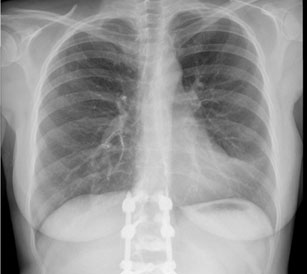 |
Case Report
Intraoperative pulmonary embolism during general anesthesia diagnosed with transesophageal echocardiography: A case report
1 MS, Stanford University School of Medicine, Stanford, CA, USA
2 MD, PhD, University of California, Los Angeles, Harbor-UCLA Medical Center, Los Angeles, CA, USA
3 MD, MBA, University of California, Los Angeles, Harbor-UCLA Medical Center, Los Angeles, CA, USA
Address correspondence to:
Sassan Rafizadeh
MD, PhD, Tarzana Providence Cedars Sinai, 18321 Clark St, Tarzana, Los Angeles, CA 91356,
USA
Message to Corresponding Author
Article ID: 100077Z09MA2024
Access full text article on other devices

Access PDF of article on other devices

How to cite this article
Abikenari M, Rafizadeh S, Kakazu C. Intraoperative pulmonary embolism during general anesthesia diagnosed with transesophageal echocardiography: A case report. J Case Rep Images Med 2024;10(2):1–4.ABSTRACT
Introduction: Acute pulmonary embolism (APE) is a potentially life-threatening condition with significant morbidity and mortality, particularly in the perioperative period. Early detection and intervention are crucial, but common signs and symptoms may not be easily identifiable under general anesthesia. This report presents a case of intraoperative APE in a 43-year-old female undergoing general anesthesia for left patella tendon repair following a ground-level fall.
Case Report: During the procedure, the patient experienced an acute pulmonary embolism. Rescue transesophageal echocardiography (TEE) revealed a thrombus in the right main pulmonary artery and signs of right heart strain, including tricuspid regurgitation and right ventricular dilation. The patient was immediately taken to the interventional radiology suite for catheter thrombectomy. Following the procedure, her condition stabilized, and she was discharged with anticoagulation therapy.
Conclusion: This case highlights the clinical challenges of diagnosing intraoperative APE in anesthetized patients, where typical symptoms may be obscured. Intraoperative TEE proved crucial in the timely detection of the embolism and enabled life-saving intervention. The importance of utilizing advanced diagnostic tools in managing intraoperative emergencies is underscored. Future research aimed at developing pathophysiologic models and diagnostic flowcharts for intraoperative APE may help improve outcomes in similarly challenging cases.
Keywords: Acute pulmonary embolism (APE), Catheter thrombectomy, Interventional radiology (IR), Intraoperative diagnosis, Transesophageal echocardiography (TEE), Venous thromboembolism
SUPPORTING INFORMATION
Author Contributions
Matthew Abikenari - Substantial contributions to conception and design, Acquisition of data, Analysis of data, Interpretation of data, Drafting the article, Revising it critically for important intellectual content, Final approval of the version to be published
Sassan Rafizadeh - Substantial contributions to conception and design, Acquisition of data, Analysis of data, Interpretation of data, Drafting the article, Revising it critically for important intellectual content, Final approval of the version to be published
Clinton Kakazu - Substantial contributions to conception and design, Acquisition of data, Analysis of data, Interpretation of data, Drafting the article, Revising it critically for important intellectual content, Final approval of the version to be published
Guaranter of SubmissionThe corresponding author is the guarantor of submission.
Source of SupportNone
Consent StatementWritten informed consent was obtained from the patient for publication of this article.
Data AvailabilityAll relevant data are within the paper and its Supporting Information files.
Conflict of InterestAuthors declare no conflict of interest.
Copyright© 2024 Matthew Abikenari et al. This article is distributed under the terms of Creative Commons Attribution License which permits unrestricted use, distribution and reproduction in any medium provided the original author(s) and original publisher are properly credited. Please see the copyright policy on the journal website for more information.





